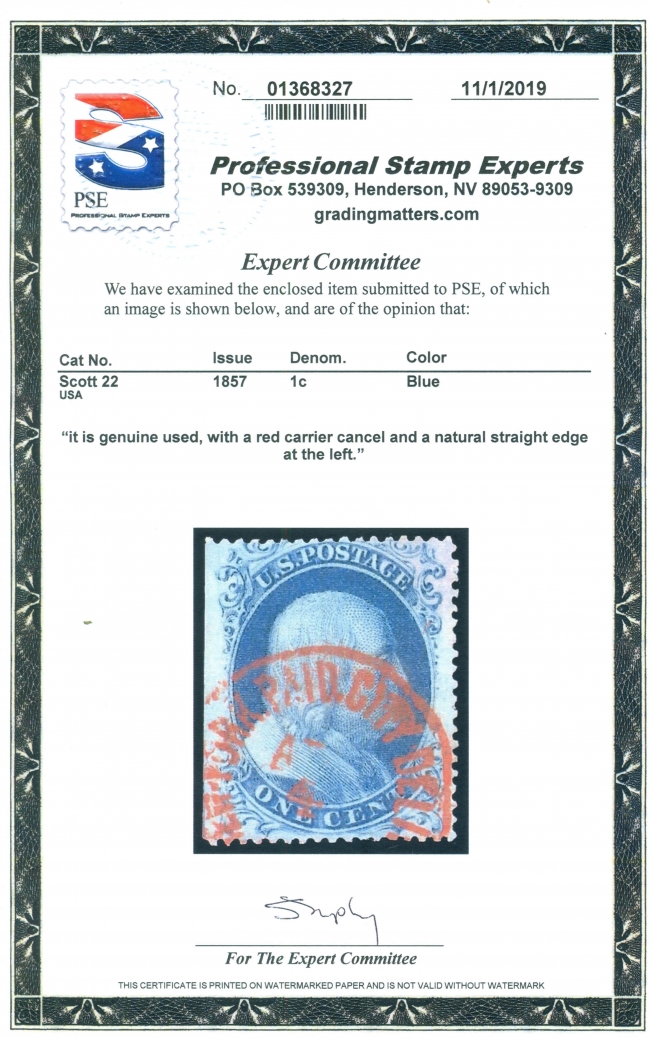The dreaded straight-edge stamp
Here's a scan of one of my favorite stamps in my collection. Yeah I know I know...being a lowly straight edge it's unloved by the philatelic community. Actually the interesting aspect to me with this stamp is that it's likely one of the few unmolested survivors of the 1857 issue that were issued with straight edges hot off the press. Certainly this stamp would been an exceptional candidate for reperforation. Do any of you stamp gurus here know what percentage of 1857 issues were issued with a straight edge?
Also interesting to me is the fact that straight edged stamps almost never show up on the high end auctions on SAN. So either there are very few left, or there is simply no demand for these types of stamps?

Also interesting to me is the fact that straight edged stamps almost never show up on the high end auctions on SAN. So either there are very few left, or there is simply no demand for these types of stamps?


Comments
The 1851 and 1857 stamps were printed by Toppan & Carpenter in sheets of 200, and split into panes of 100. They were separated (they do include a center line and stamps with this feature visible (can occur on either side, depending on the position of the sheet when cut) are known as "interpane margin". The center line on the sheets was not perforated, and rather sheets were cut into panes of 100 after the sheet was perforated. Therefore, natural straight edges are found only on vertical sides of the 1857's. The outer edges were perforated leaving a selvage on 3 sides. So this stamp, and other 1857's would have exactly 20 stamps per sheet with a natural straight edge, or 10% of all perforate stamps from this era, for every perforated denomination.
Regarding availability, certainly a large percentage of these have been reperforated over the years. That practice has mostly stopped now, as people find that reperforated stamps lose their value. The interest to collectors remains in the appeal of the aesthetic. The presence of a straight edge on the left of this stamp helps determine its plate position, as is the case with any straight edge stamp. (I'm not into "plating" of the 1851 and 1857 1c and 3c stamps, but there is an entire practice devoted to this which requires an enormous amount of resource to get enlargements of every position of every plate, and every printing (Early, Intermediate, Late) is particularly daunting.
Getting numbers on these is hard, because you have to consider that the different types came on the same sheets. They types are all about the variation in engraving. But overall, any 1857 perforate stamp would have 10% of the stamps with NSE.
They have taken on a greater respect overall, but usually, they don't get the premium they would were they authentically perforated with the same centering. But many still fetch reasonably good prices (those that survived the 40's - 60's).
For issues pre-1900, I am not averse to a NSE. I have a couple in the collection.